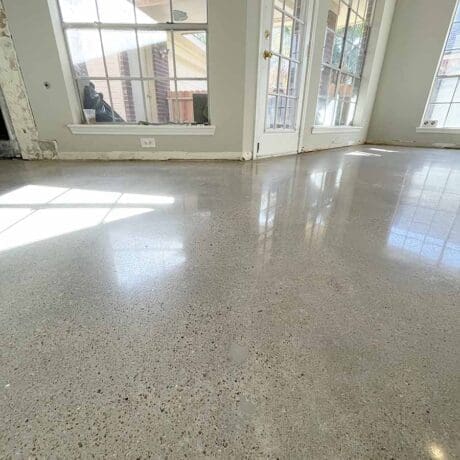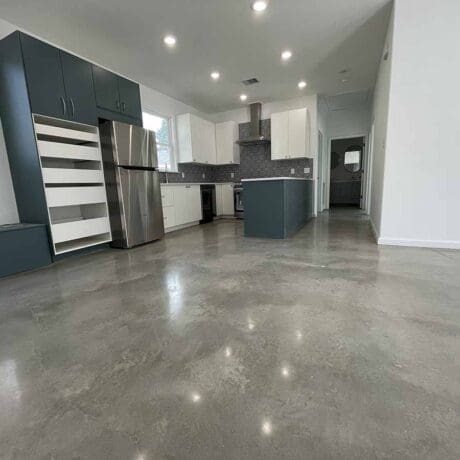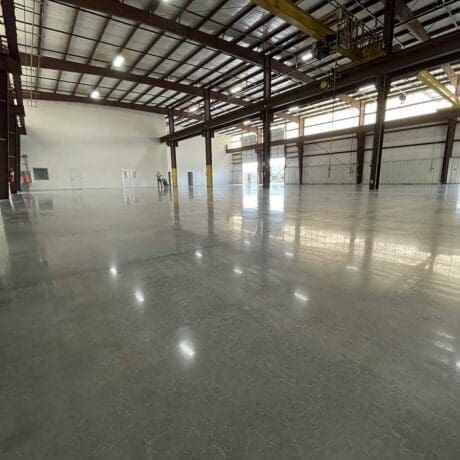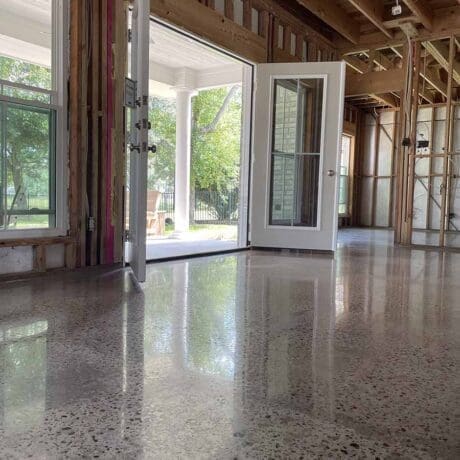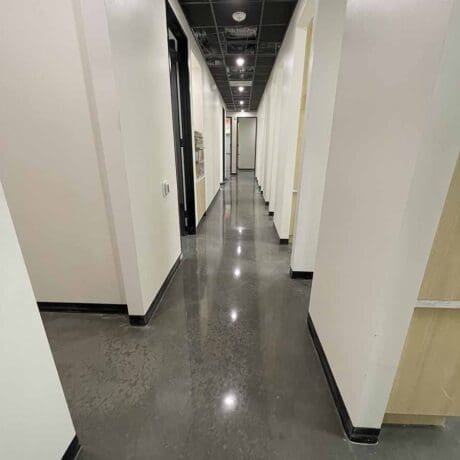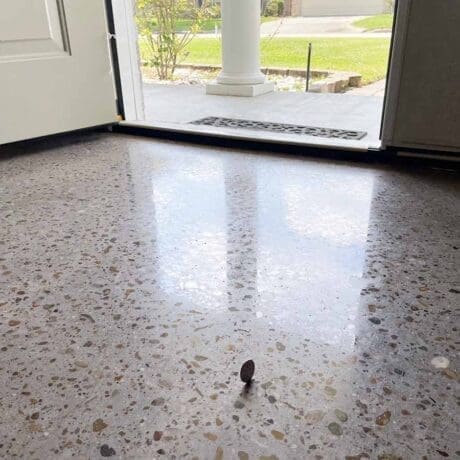POLISHED CONCRETE IN HOUSTON

OVERVIEW
Concrete polishing becomes more and more popular among retail and commercial customers. Restaurant owners and industrial facility managers admit its versatility. Above all, they emphasize low maintenance and hardwearing surface. People love polished concrete for its minimalistic, clean, and contemporary appeal.
Customers decide the level of polished sheen that best suits their aesthetics and use. The gloss ranges from matte to high-gloss. Customization of polished concrete has no limits. You can choose any color or stencil for your floors. Whether for commercial, industrial, or residential use, those flooring options come in a large variety of designs.
UNICRETE offers a wide variety of polished concrete finishes for any industry. We install polished concrete floors in residential, commercial, and industrial facilities. Above all, our well-trained crew achieves perfect results in a fraction of time.
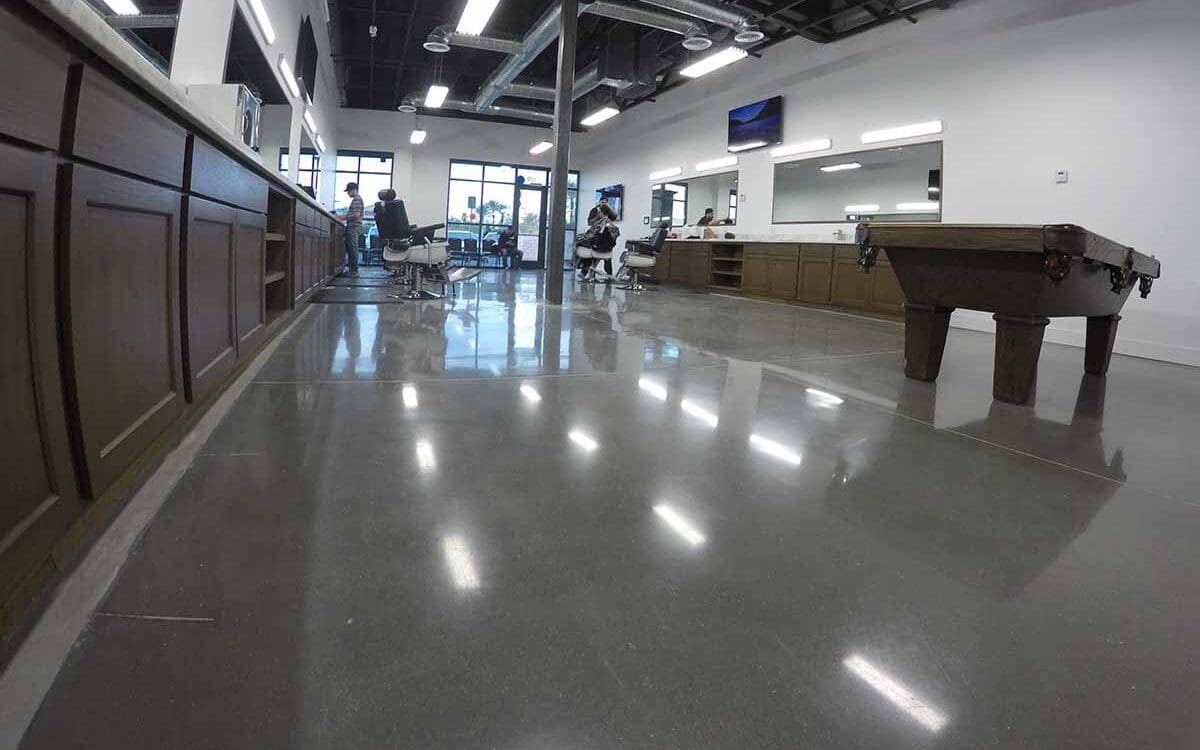
LONGEVITY
The biggest odd of polished concrete is its ability to last. A properly polished and maintained floor has a nearly unlimited service life. It can handle the most challenging service. Strengthen polished concrete floors increase its impact and abrasion resistance.
EASE OF INSTALLIATION
It doesn’t require moisture barriers of floor leveling compounds before installation. In short, once you have a concrete slab, it is already a floor that can be prepped and polished.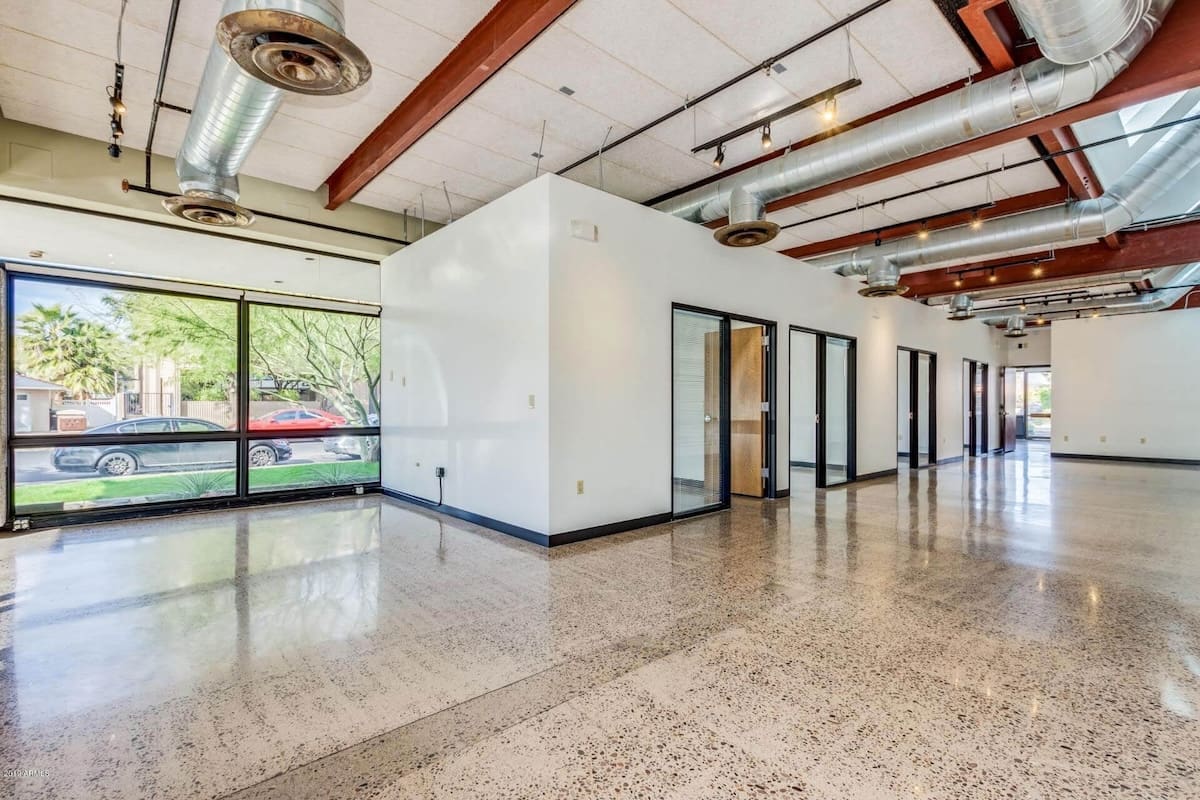
PRACTICALITY
It is hard to imagine flooring that has both long-term and short-term benefits. The fact that concrete is already in place makes the price even more affordable. In the long run, maintenance costs are also low. Increased ambient lighting will reduce energy bills.
ENDURANCE
The treated concrete floor transforms the porous concrete floor into a sleek surface. In addition, it can withstand extreme wear and tear and repel water. Even with a mirror-like gloss finish, it stays slip-resistant. Most importantly, sealer improves stain resistance and gives additional gloss.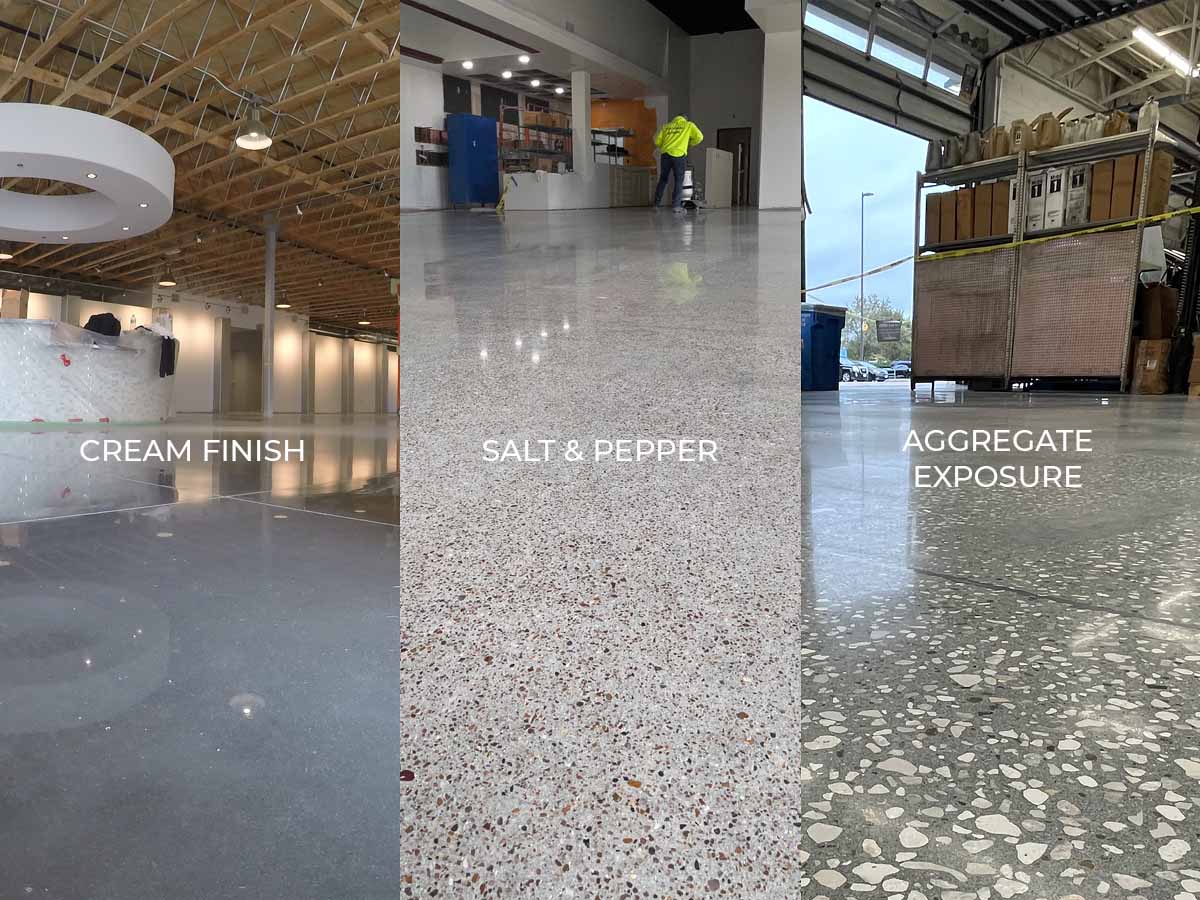
AGGREGATE EXPOSURE LEVELS
Aggregate exposure refers to the amount and size of aggregates seen on the floor. Every concrete mix has its unique properties. The size, density, and distribution of aggregates depend on concrete mix design. Above all, there are three levels of exposure: cream, salt and pepper, and aggregate exposure.
The cream finish has a fine-cement polished look. It requires less grinding. In general, the quality of floor flatness dictates the final look for cream polishing. It may have trowel marks.
Salt and pepper create a flatter surface with a rich texture of small aggregates. This aggregate exposure gives the most uniform look.
Large aggregate exposure gives the flattest surface. It requires more time for grinding but gives an ultimate look and clarity to polished concrete.
The Polishing Process
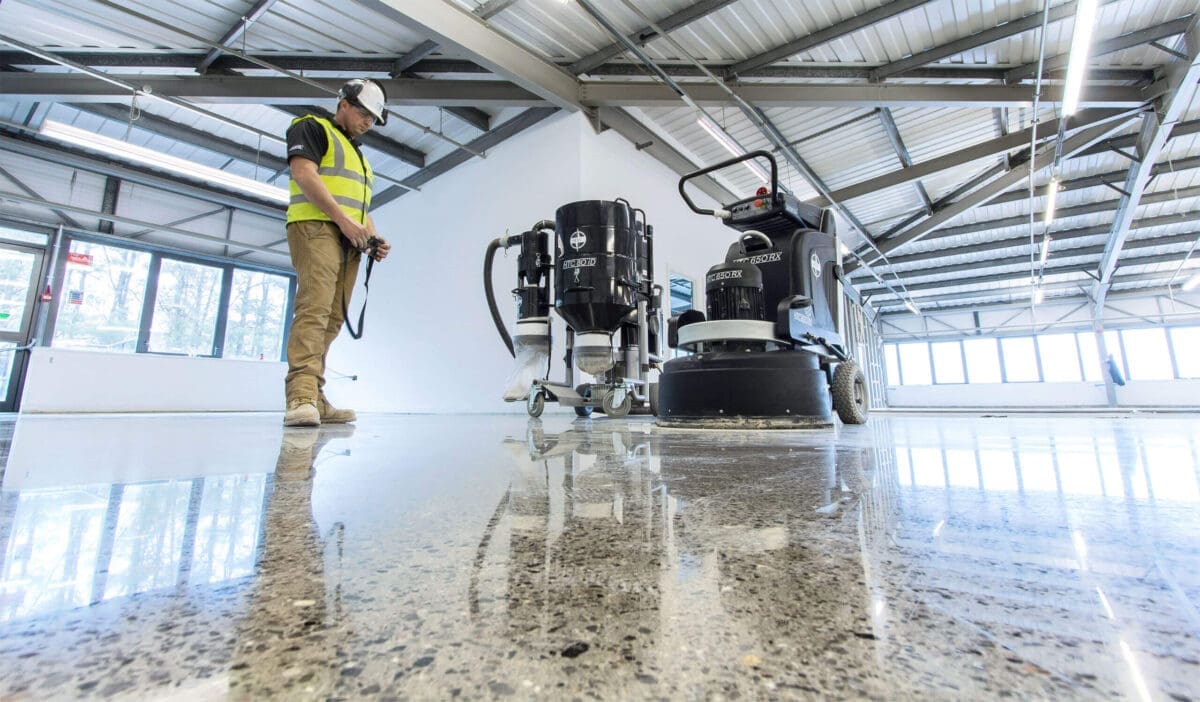
Firstly, the process starts with aggressive metal bond diamond tooling. The first steps grind off the top layer of the concrete. Choosing the right tool determines the level of aggregate exposure. After that, once we complete the first grinding steps, here comes the time for repairs. At this step, we fill cracks, holes, divots, and air pockets with an epoxy compound. Then, the existing concrete slab is getting ground by more refined diamond tools. After that, we apply a densifier with lithium silicate. Then, we continue with transitional ceramic tools and with resin diamond pads. The last polishing step determines the gloss level. Typically, professionals call 400 grit finish honed concrete. Polished starts at 800, 1500, or 3000 grit. The application of the sealer is the final step. The sealer helps to protect the floor from spills and stains. It also adds additional gloss.
ADDING COLOR TO POLISHED CONCRETE
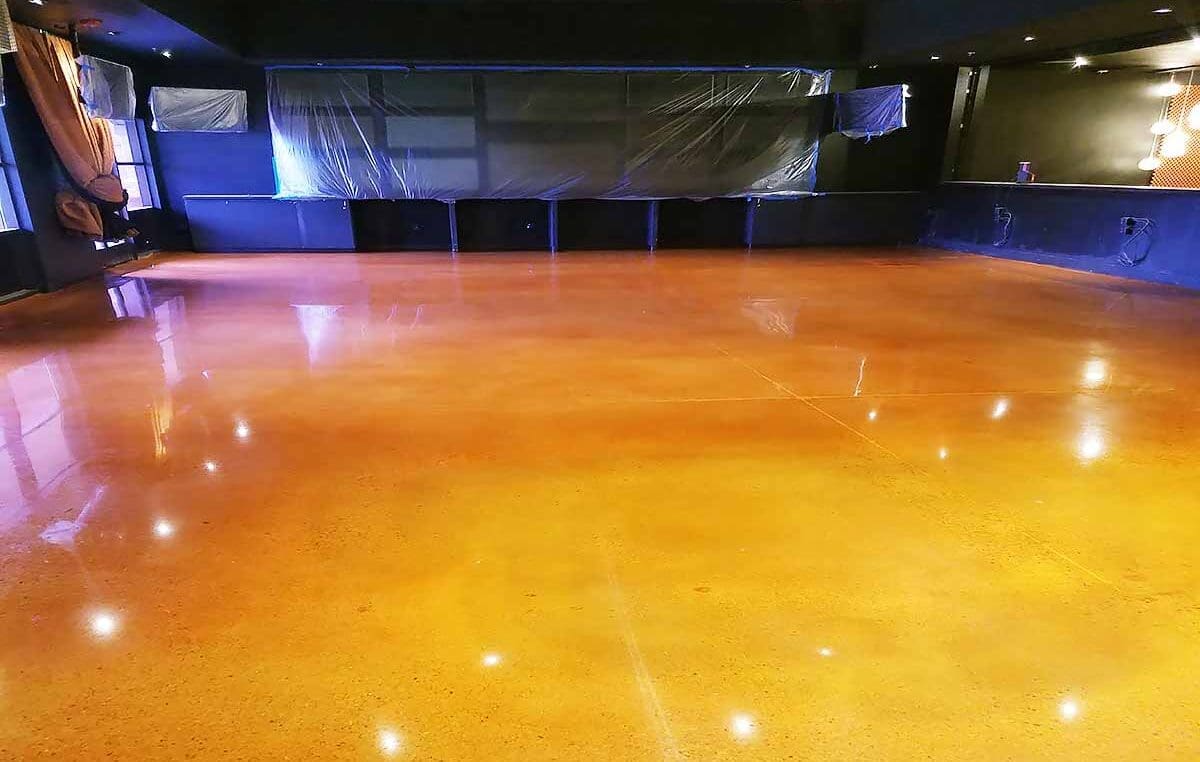
The most effective way to dress up your concrete floor is to add some vibrant color to it. Our dyes selection has a broad palette of colors. Sometimes adding colors can mask imperfections, especially when you have two different slabs. Large patches may also be stained to match the rest of the floor.
While polished concrete has a limited stain resistance and ability to hide imperfections, epoxy coatings and sealed concrete might be a better option for you. In addition, these coatings has an exceptional chemical resistance.
On the other hand, we need to remember that most of the dyes are not UV-stable. So most of the time, adding color to a concrete floor is an indoor option. In addition, oil spills, acids, and even tile can leave stains that are not visible on a non-colored surface. So, only qualified flooring specialists can evaluate the risks of adding color to the concrete floor.
Polished Concrete Cost
Check our weekly updates on Instagram or Completed Projects. Take a look at our ongoing projects. Give us a call. Find us on YouTube. Ask any questions in the comment section. Subscribe to get inspired by our job.
A FREE ON-SITE ESTIMATE!
We provide free on-site consultations to help our customers.
Find what flooring options you can get.
We are proud of our reputation for giving clients proven and long-lasting solutions.
